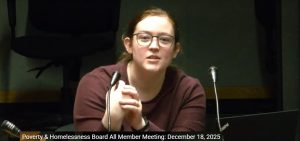PeaceHealth decisions years ago set course for Eugene hospital closure
4 min read
by Marty Wilde
I was disappointed to read that PeaceHealth will close Sacred Heart University District Hospital in the coming months. I can’t tell you how many of you have told me, “I was born there!”
While it would be easier to simply write it off as another example of corporate hardheartedness, the reasons behind the closure are a mix of divestment and forces beyond PeaceHealth’s control. These include the choice to put revenue-producing activities at RiverBend, the need to make seismic improvements, and spiraling labor costs.
Planning to Fail. Let’s first take a whack at the low-hanging fruit of corporate greed. When a corporate entity wants to restructure, one infamous way to do it is to spin off all the money-losing activities in a single entity.
Here, that meant keeping money-losing departments at UD – University District, while moving moneymakers to RB – RiverBend.
Specifically, PeaceHealth moved moneymaking outpatient surgical procedures to RB, while keeping money-losing inpatient medicine, emergency, and psychiatric care at UD.
UD stopped doing outpatient surgeries at the end of 2008 and the financial trend has been in the wrong direction ever since. This is similar to their recent decisions to cease providing pediatric cardiology, optometry, and sleep medicine services in the local area.
What corporation doesn’t want to get rid of money losers? But PeaceHealth is a nonprofit – a charitable entity. It is supposed to balance those money losers with moneymakers to provide benefits to the community, not just the bottom line. For this very reason, I expect that the Oregon Health Authority may take a dim view of the closure.
Infrastructure Improvements. A hospital must stay open after a major earthquake. We’re taking steps to make this kind of critical infrastructure more robust. However, retrofitting an existing building to survive a 9.0 or greater Cascadia Subduction Zone quake – and especially a big building like a hospital – is a very, very expensive proposition. Even a nonprofit has to have a sufficient annual operating margin to service the capital debt necessary to fund the renovations.
UD’s operating margin was -57% in 2022, according to the Oregon Health Authority. As we would say in the Air Force: “No bucks, no Buck Rogers.” UD had an adequate margin to do this before the refocus toward RB in the late aughts, but it certainly doesn’t now.
Labor Costs. Looking at the data, I was struck by how little had changed for UD overall, except for operating expenses. Those shot up over the last few years for one very simple reason – labor costs. When the pandemic hit, we all worried about hospital ‘beds’ – the usual term for capacity in a hospital. But the cost of a ‘hospital bed’ is mostly the cost of staffing it with physicians, nurses, respiratory therapists, environmental health workers, and all the other people who’s collective efforts keep sick people alive. Pre-pandemic, we were already short nurses, the most critical factor in hospital capacity.
Burned out on inpatient care during the pandemic, many nurses have sought greener pastures in non-hospital based work. Those that have stayed command significantly higher wages than before. (And they deserve every penny!)
Non-Factors. Much of the speculation about the closure has revolved around factors that have not proven important. Contrary to expectations that care for those unable to pay was driving the closure, the UD’s rates of bad debt and uncompensated care were down significantly in 2022 from 2021. PeaceHealth itself said that excess capacity and underutilized bed was a primary motivator, but their census figures are generally in line with historical trends. Patient revenue is actually up about 15% from pre-pandemic levels. It’s just that costs are up over 40% over the same period of time.
The Future of UD. The last article I read did not mention whether the Oregon Health Authority had approved the closure or not. As Legacy in Portland found out while it tried to close an obstetrics unit, OHA can and does use its authority to prevent closures when it has to do so to protect the public.
However, should OHA take action to prevent the closure, it will do nothing to stop escalating costs and staff shortages or make seismic retrofitting financially viable. Unlike the Legacy situation, UD doesn’t just have a single department losing money, but rather the whole facility. I expect that PeaceHealth will be allowed to close UD, albeit with some agreements with OHA to mitigate the impact.
One Happy Coda. As I wrote this, Lane Community College announced an agreement with PeaceHealth to fund an additional 20 nurse training positions and to restart the respiratory therapy program. I’m glad to see that they’re taking some action to attack the roots of the labor shortage that is driving UD’s closure.
For more Letters From a Recovering Politician, subscribe at https://martywilde.substack.com/subscribe.






